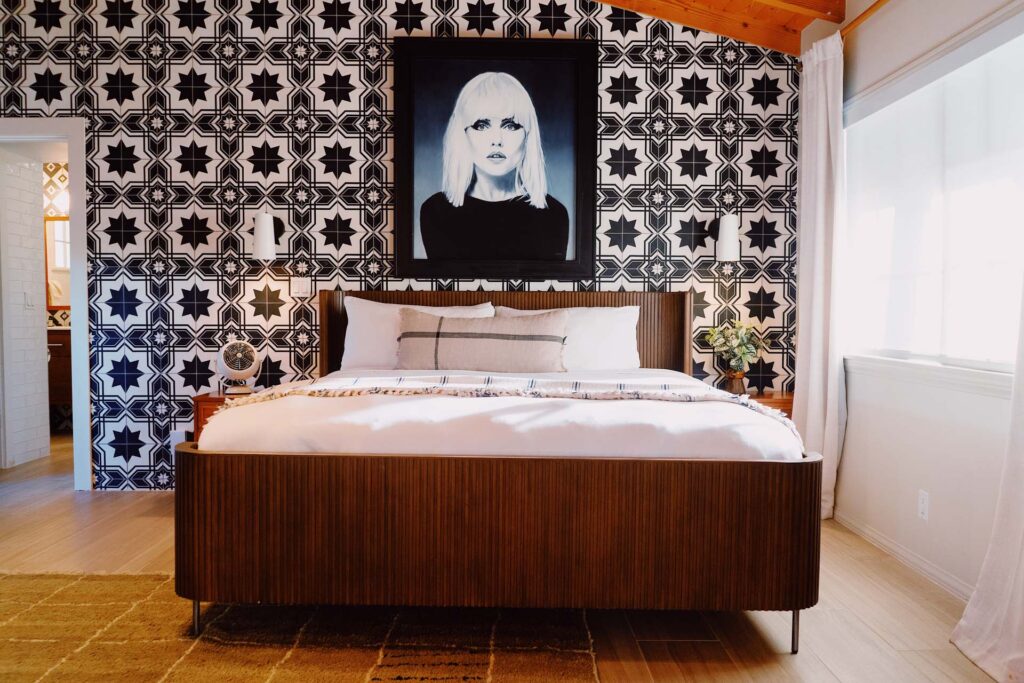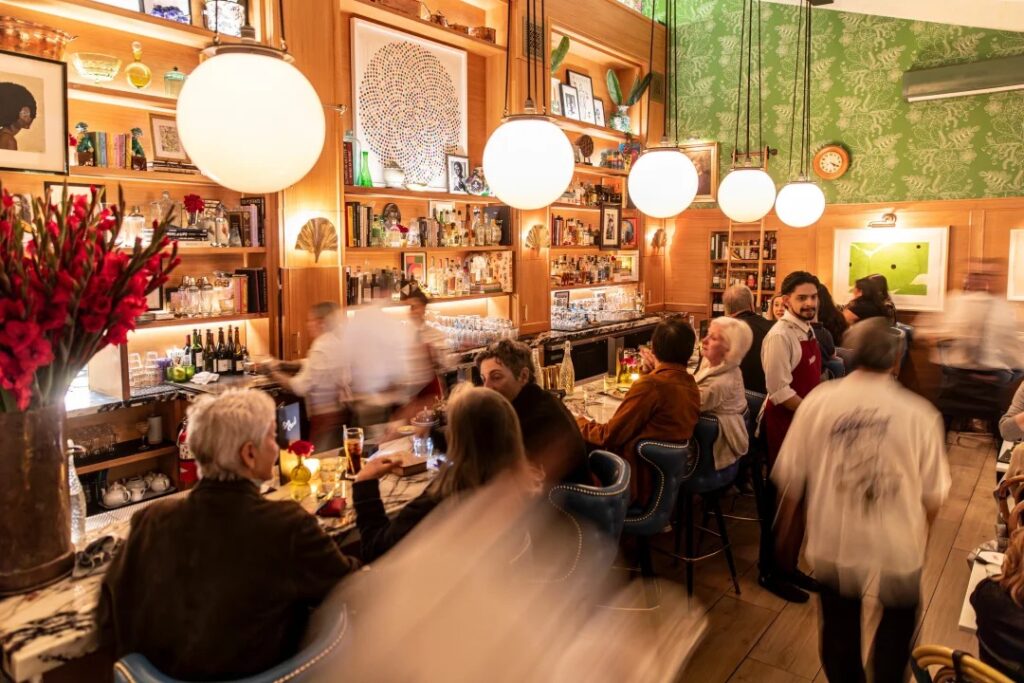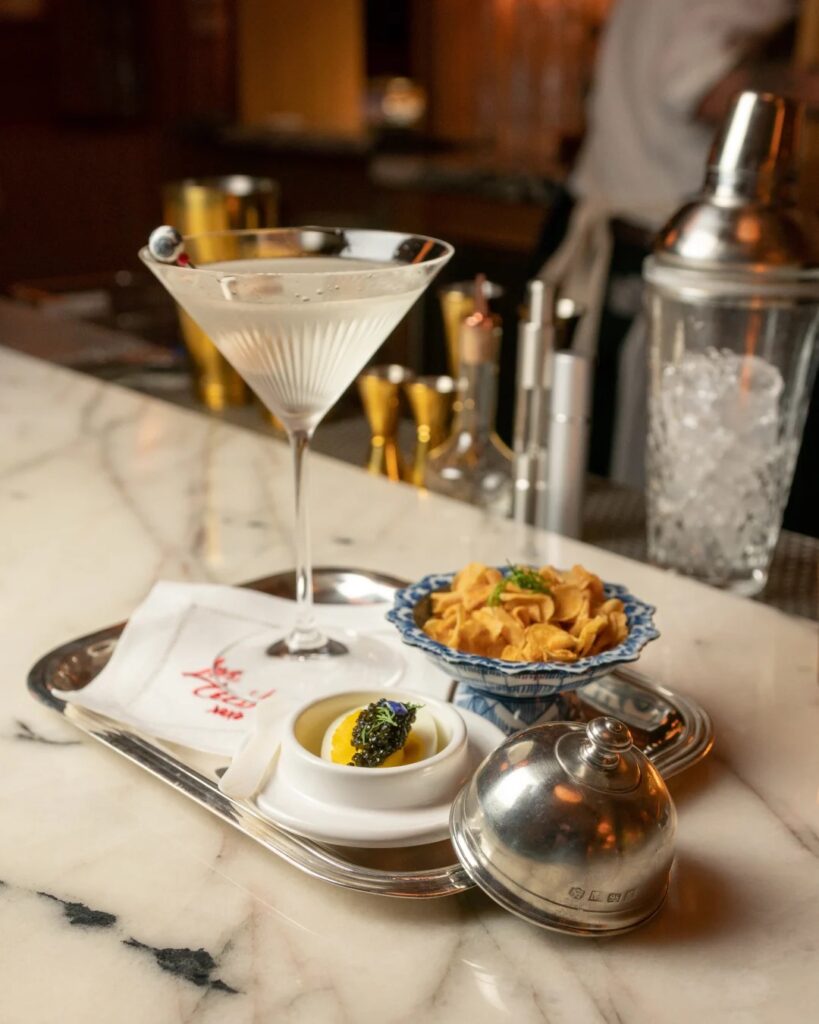SEATTLE MET
By Allison Williams
It’s not just midcentury modern anymore.
INSIDE THE COURTYARD of Villa Royale, it could be 1965. Or at least how I think 1965 looked and felt, with bossa nova sounds drifting over the swimming pool, the loungers slung with black-and-white striped towels while palm trees sway above. Spanish mission–style tiles line the roofs on single-story buildings, whose big french doors can open to let the breeze inside. Thanks to the masonry wall that surrounds the hotel property, buoyed by a barrier of ficus trees, it’s hard to tell that there’s anything but desert out there.
There is, of course, plenty more than barren desert out there. This is Palm Springs in the 2020s after all, and there’s an Ace Hotel and its party pool just a few blocks away. Lots of Airbnbs and middle-class homes, too. Plus a casino and a Margaritaville Resort and a new hockey arena just outside of town.
None of this is what I’m looking for. Rather, it’s the golden-era Palm Springs that I seek. I could get the outdoorsy side of the high desert in Oregon, or a nice swimming pool in Mexico—with a beach to go with it. I’d come to the Coachella Valley in search of a taste of the glam life—as long as it didn’t feel too cheesy.
When Villa Royale got a full renovation, it found ways to reclaim the feeling evident in old black-and-white photos of the hotel from back when there was only valley dirt in the distance. The trick was capturing not the exact history, but the legend Palm Springs made of itself from the very beginning.

How did a hot, windy, remote stretch of desert gain such cachet? History points to one specific cause: the two-hour rule. Back in midcentury Hollywood, the big studios told their actors—under exclusive contracts per the old system—that they couldn’t go more than a two-hour drive from the movie lots, lest they be needed for reshoots or publicity. Palm Springs was about as far as you could get under those guidelines.
Like any good Hollywood retreat, stories abound at the Villa Royale. There’s one tale that says that Evelyn Pell, the original owner, ordered giant ice blocks in the middle of summer, the kind that were carried by those giant metal tongs, and dumped them in the swimming pool once it got lukewarm from all the sun. It turned the water into a giant cocktail, with the bathers as the garnish.
News articles attributed the property to Sonja Henie, the Olympic ice skater turned Hollywood starlet, for a time, with claims that she built an ice rink out back—but a 2016 history brief from the Palm Springs Preservation Foundation makes no mention of her. “Rebel Without a Cause and West Side Story were written on the property,” says co-owner John Janulis, though that’s hard to prove. (Screenwriter Irving Shulman did visit regularly; he worked on the script for the former and penned a novelization of the latter.)
Capturing that elusive vibe meant ditching the bright colors and hard lines. Janulis, a Portland restaurateur whose ownership group took over in 2016, led another renovation last year that has Pacific Northwest sensibilities, expressed through a purely Spanish California design.
The homes eclipsed the actual Hollywood stars that owned them in fame: Frank Sinatra’s Twin Palms estate; the house where Elvis Presley spent his honeymoon.
“When we moved here a lot of the homes had that super kitschy feel—orange doors and bright blue, the midcentury modern posters everywhere,” he says. “I think that that style has gotten really tired.” Instead, he turned to couches that were leather and comfortable, not boxy and firm. To match the stucco and tile, colors are earthy, sometimes muted, punctuated only by occasional blues or greens.
Janulis commissioned portraits of stars that hit the right note of irreverent cool, no matter the decade: Debbie Harry. Charles Bronson. Montgomery Clift. It didn’t need to look just like 1945 or 1965 or 1985, exactly, but more a generalized hip, swinging past. No kids are allowed in the hotel, and at only 38 rooms it never musters the sheer numbers needed for a pool-party atmosphere.
When twilight hits, cocktail hour (well, hours) is already well underway around the pool, and if you squint you can believe that it could only be interrupted by Louis B. Mayer hollering on the telephone, calling everyone back to the MGM lot.
IN THE ANTIQUE DISTRICT of Palm Springs, Swag doesn’t stick out much. It’s not a proper district anyway, just a few intersecting streets south of downtown where several thrift and resale shops have sprouted. Closer to the main drag, popular Revivals has a warehouse feel, taking up the corner of a strip mall right next to a Mail Box Plus and More. There the shelves overflow with secondhand cufflinks and Williams-Sonoma caviar plates, the idea being that treasures could be dug up by anyone with an Indiana Jones approach to thrifting.
But in Swag, the selections have already been made. Dale Chessher, who owns Swag with wife Margaret, knows that while treasure hunters may picture Palm Springs as a trove of abandoned wares, it hasn’t been that way for a while. Local homes aren’t giving up their classic midcentury furniture all that often, he says. “Homes here, they stay as they’re decorated for a number of years.”
Palm Springs is synonymous with midcentury modern, a style all about “stripping away the frills,” as designer Jonathan Adler defined it to Architectural Digest. Born of post–World War II optimism, it meshed with the climate-related needs of life in the Coachella Valley—open floor plans for airflow, floor-to-ceiling windows to let in light, and living spaces that bridged indoor and out.
The homes eclipsed the actual Hollywood stars that owned them in fame: Frank Sinatra’s Twin Palms estate; the house where Elvis Presley spent his honeymoon. House tours popped up, buses winding through the quiet streets of Palm Springs so tourists could snap photos of angled roofs and asymmetric facades. In 2006, Modernism Week—full of tours and talks—was launched, and these days the Palm Springs Visitor Center sells tissue-box covers shaped like midcentury modern houses for $75 each.
But as midcentury modern, a.k.a. “MCM,” has become more of a brand, Chessher sees people coming to Palm Springs looking for a nuance. “It’s gone from the wood furniture of the ’50s and ’60s to more of the brass and metal and Lucite of the ’70s and ’80s,” he says. Rather than scour only Palm Springs estate sales, he gets much of his furniture and home decor from contacts in San Diego and Los Angeles. His pieces are mirrored, spiky, bold; less Cary Grant cool and a little more Joan Collins chic. “Modernism is changing,” says Chessher. Palm Springs—and thrifting across the desert town—is getting a little more interesting because of it.

THE PAST CAN BE better than anyone remembers it. At least that’s the case at Bar Cecil, a restaurant the Los Angeles Times calls the “darling of the Palm Springs restaurant scene.” Opened in 2021, it’s so popular that crowds gather when it opens at 5pm, hoping for a walk-up table. Though Janulis helped launch it too, he credits fellow owners Jeff Brock and Richard Crisman, partners and hoteliers, with the outlandish touches that would give the restaurant its good-times vibe.
The pair knew that the Fifty Dollar Martini—the name on the menu and also the price—would be a hit in a space that looks like it’s hosting the hottest party of 1976. “I thought it was the dumbest idea on earth,” says Janulis, admitting that he was wrong about the appeal of a cocktail that costs an entire Ulysses S. Grant. The vodka comes from French winemaker Jean-Claude Boisset, the deviled egg garnished with caviar from chef Thomas Keller. It used to be served on a Tiffany silver tray until they were all surreptitiously nicked by customers, but the olives are still skewered with porcelain toothpicks.

The taste, well, is like most martinis—a smack in the face if you’re not a martini person. Where it succeeds is as an event in a glass. Though the kitchen executes a sensational pork chop and roast chicken, the exorbitant martini and hip living room decoration deliver the sense of the grooviest house party in the Hollywood Hills. Were Sinatra’s martinis this indulgent? If not, I don’t want to know.
After a few days of feeling out Palm Springs’ retro cool, its pastiche of Rat Pack and Liberace, Hollywood flair with a dash of desert nonchalance, I made one last stop that felt totally outside the MCM bubble. I drove north from Palm Springs on the flat highway that intersects the windmill farms.
The Windmill Market sits at an intersection in the desert, a classic mini-mart selling standards like Slim Jims and oddities like Leninade soda. (“Get hammered and sickled!”) The specialty is a date shake, one they’ve been making the same way for two decades. “Just milk, hand-scooped ice cream, and chopped dates,” says the man making my shake behind the counter. “Other people use syrups,” he adds, making it clear that’s a lesser method.
The Styrofoam cup itself feels like a remnant from another era. The drink is a welcome dose of cold, punctuated by the sweet dates, not the kind of milkshake I’d get or want regularly; it’s more a sundae with a straw. This region helped launch the idea of windmill farms in the US; date farming goes back to the nineteenth century, and today almost all of America’s dates come from the Coachella Valley.
Nothing here feels modern, midcentury or not. And standing in the sunshine outside the market, bladed sentinels above, all the other facets of Palm Springs come into relief, a sense of what this place might have looked like without the two-hour rule. Maybe we wouldn’t come here to recapture an imagined 1965—maybe it would have simply been the sharp punch of fresh dates through a wide straw. Here, today, there’s a taste of both.

